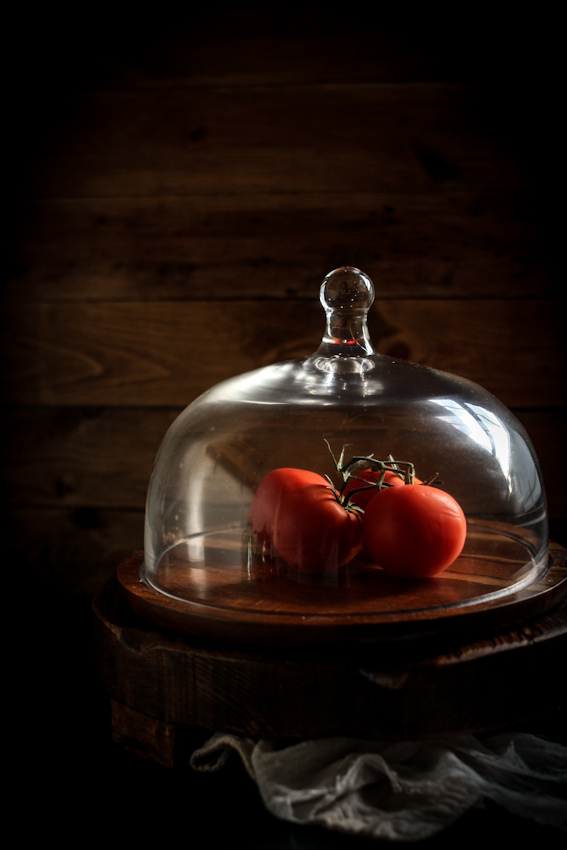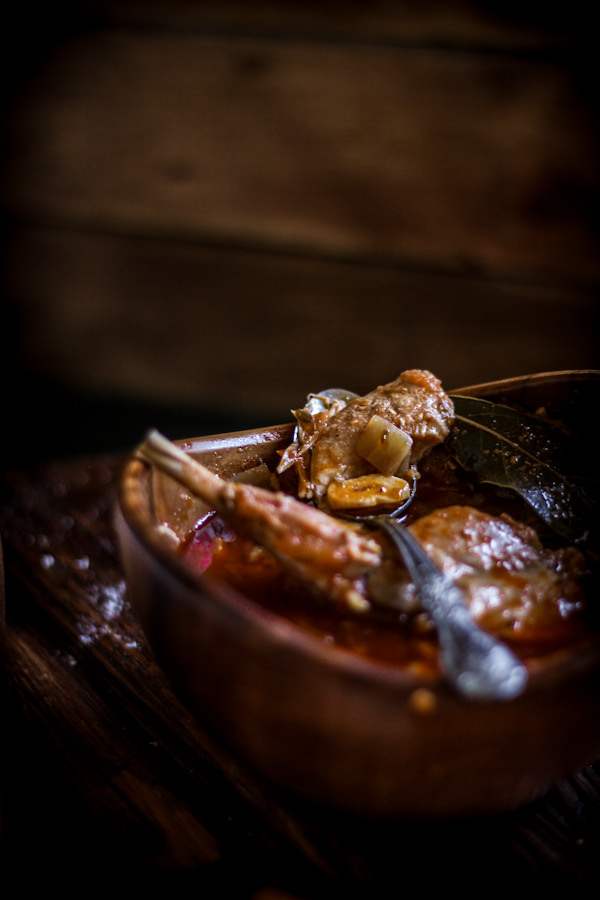
I have returned from my trip to Vermont, and I had even more fun than I could have hoped for. And while I did come home with a terrible case of jet lag and was barely able to peel myself off the floor of my shower enough to slouch myself into bed, it was more than worth the incessant dizziness. I will be posting about it all soon (along with a tasty pie recipe!), but for now I am just going to talk about rabbit. Yes, rabbit. That adorable yet tasty mammal that much of the world eats but is fairly uncommon in most American kitchens. I grew up eating rabbit a few times a year because my mother loved rabbit and my father had some tasty Greek recipes for it tucked away, including this one. He grew up on a pistachio farm on the small island of Aegina, Greece. His family lead a very simple life and ate the livestock they could raise, which was limited to rabbits and chickens. Rabbits are very easy and inexpensive to raise for several reasons: 1) They have a very low carbon footprint (particularly when compared to larger mammals like beef) and don’t need an entire field to roam around in 2) They eat pretty much any vegetable you toss their way, and 3) They reproduce like…well, rabbits; which makes for a constant and reliable food source.
Cooked rabbit meat looks a lot like chicken, but the flavor is much richer and slightly gamier. It is also much tougher than chicken meat (rabbit muscles are surprisingly strong), which is why it is perfect for stews where it can simmer away for hours in a flavorful broth of fresh vegetables until it’s tender enough to fall right off the bone and dissolve in your mouth like butter, which is exactly what happens in this recipe. You can purchase rabbit from your local butcher, most butcher departments in grocery stores will be able to special order a rabbit for you frozen (frozen rabbit meat is completely fine, mine came frozen as well! Just make sure you defrost it completely before attempting to cut it.) This recipe makes for a very brothy stew, so I always eat it with a big piece of crusty bread to dip into to the stew and soak up all the concentrated tomato, herb, & rabbit fat flavors. Altering between the juicy broth-soaked bread and tender slow-cooked rabbit makes for a delicious dining experience that is meant to be savored. And savored it has been and will be.

Rabbit Stew
-
1
Rabbit
about 3 lbs in weight -
3
Carrots
peeled & sliced -
2
Stalks of Celery
sliced -
1
Large Yellow Onion
chopped -
6
Cloves
of Garlic
minced -
5
Tomatoes
cut into eights -
1
Cup
Vegetable Broth -
1/2
Cup
White Wine -
1/3
Cup
White Vinegar -
1/3
Cup
Olive Oil -
2
Tablespoons
Butter -
1
Tablespoon
Plus 1 Teaspoon Tomato Paste -
3
Bay Leaves -
1
Teaspoon
Dried Oregano -
1
Teaspoon
Fresh Oregano -
2
Teaspoons
Salt
plus more to taste -
2
Teaspoons
Pepper
plus more to taste -
1/2
Teaspoon
Allspice -
1/4
Teaspoon
Cinnamon
-
Separate the rabbit into legs, ribs, arms, and thighs. Rub the outside of the rabbit meat with a teaspoon of the salt and a teaspoon of the pepper. Set aside.
-
Heat the olive oil in a large pot over medium heat and add the onions and garlic, sautéing until transparent and lightly browned around the edges, about 20 minutes, stirring every 5 minutes. Move the onion and garlic mixture to the sides of the pan and add the rabbit meat in the center. Brown the meat on all sides, cooking for about 10 minutes.
-
Add the tomatoes, tomato paste, vegetable broth, vinegar, wine, carrots, celery, butter, dried herbs and spices, and the remaining salt and pepper. Stir until blended and bring the mixture to a boil. Lower the heat to a simmer and then cover and cook for 2 and 1/2 to 3 hours, or until the rabbit meat is tender and falls off the bone. Stir in the fresh oregano and taste. Add more salt and pepper until your personal preference is satisfied, then serve.















